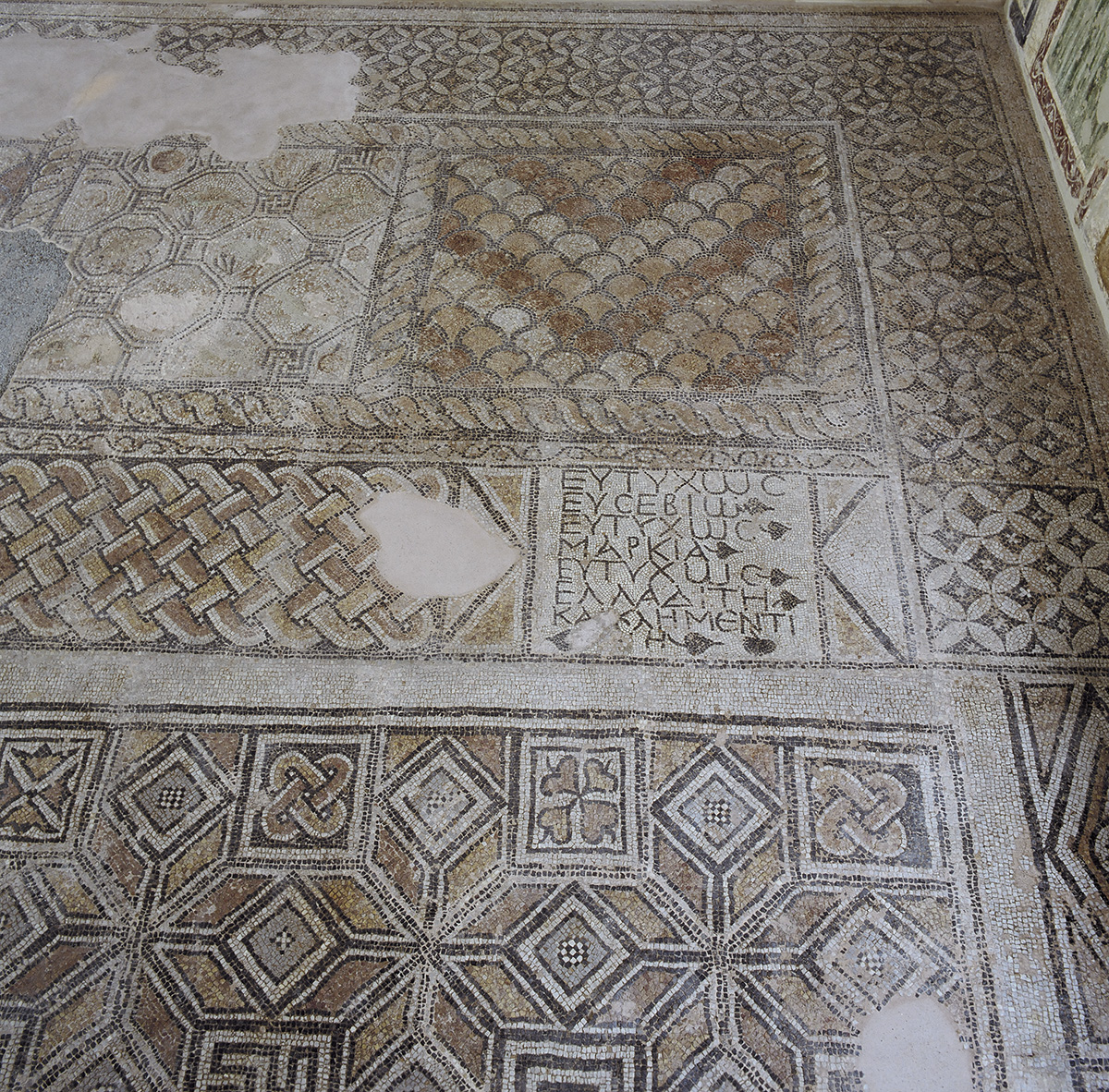
Mosaic floor of a residence’s triclinium with geometric decoration and an inscription on a tabula ansata with the names of its owners
Mosaic floor of the triclinium, the arched reception hall of a wealthy residence excavated in Ano Poli, Thessaloniki, next to the church of the Prophet Elias. At the west end of the rectangular triclinium hall is a semi-circular alcove that is raised one step up from the rest of the hall and is paved with an undecorated coarse mosaic with large tesserae of irregular pieces of marble. The rest of the room has rich geometric decoration framed by a band of interlocking circles forming quatrefoils. The main theme is partitions and bands with a variety of themes such as: parallelograms with rhombuses and squares, partitions of continuous scales, octagons joined together by swastikas containing birds and fruit, spiral shoots, meshes, squares enclosing other smaller decorations, ivy leaves, zatrikions, and swastikas. In the northern partition of the room, inside a tabula ansata, a long, narrow Roman sign with two handles, an eight-line, mosaic inscription is preserved: Good fortune to/Eusebius ♠ /Good fortune to/Markia ♠ /Good fortune to ♠ /Helladitis ♠ /and Clementi/ ♠ ni ♠ i.e. wishes for happiness to the owners of the house. This is a Roman custom that continued into the early Christian period (4th-7th century).
Code
ΒΨ 38
Type
Mosaic detached
Chronology
2nd half of 5th c.
Dimensions
Length of the triclinium: 10,35m., width: 7,45m.
Material of Construction
Marble and tile tesserae on plaster
Origin
Thessaloniki, Ano Poli, 7, Lapithon Street



